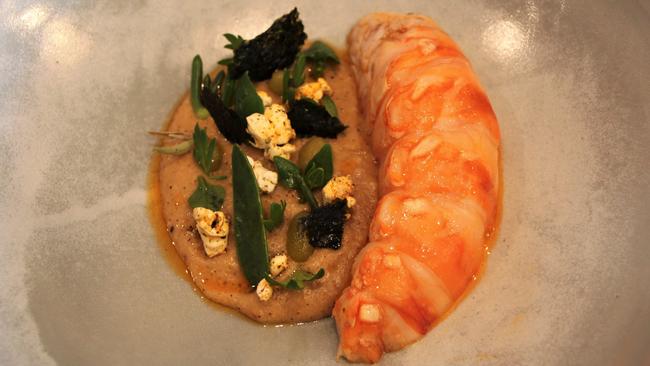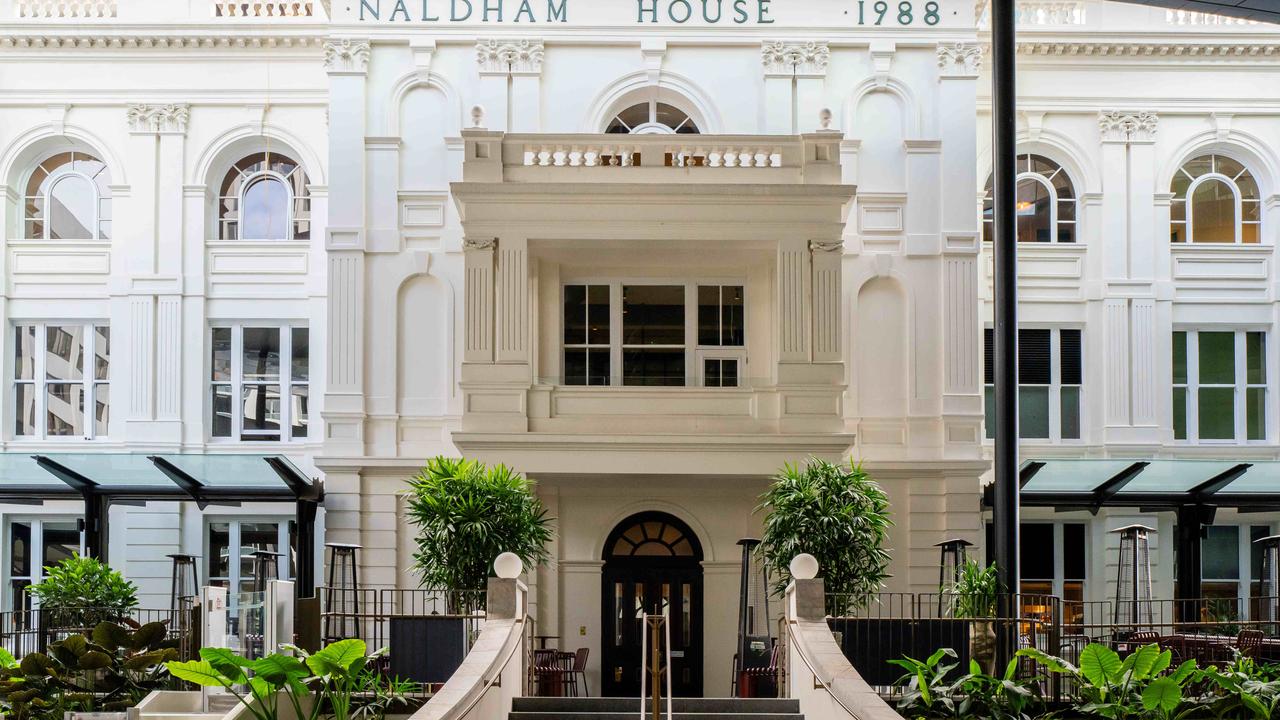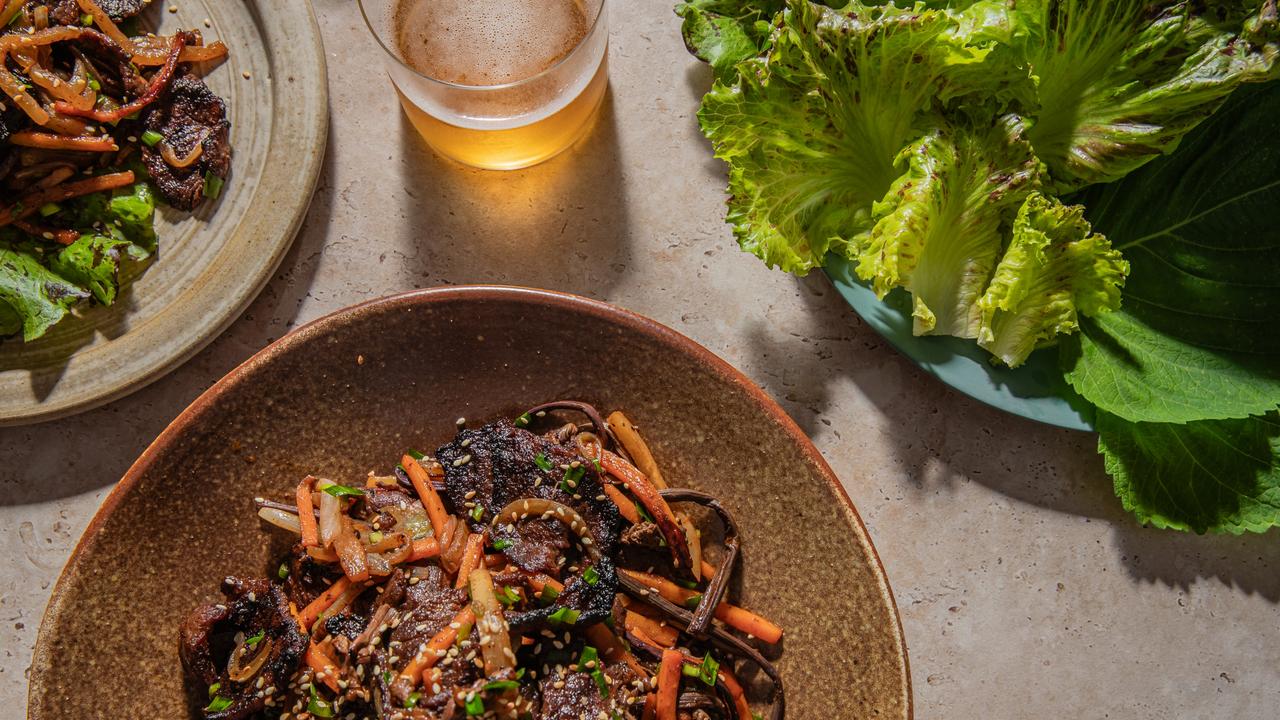Luxury lobster pairs with peasant polenta at Raes on Wategos, Byron Bay
An Italian mentality to food simplicity and produce primacy has made Raes on Wategos chef Jason Saxby the success he is.

Jason Saxby, executive chef at Byron Bay’s exclusive and uber-cool Raes on Wategos hotel, describes himself as “just an Aussie boy”.
But as such he is certainly at one with Italian flavours and methods.
More importantly, it’s an Italian mentality to food simplicity, uncluttered ingredient lists and produce primacy that has made the chef the success he is.
That and perhaps a little hard work.
Saxby’s resume is littered with impressive appointments.
They include a stint as head chef at Sydney’s Pilu at Freshwater and date back to an apprenticeship with renowned Sydney Italian chef Alessandro Pavoni.
Between, he has worked with some of the greats including Thomas Keller (California) Jason Atherton and Brett Graham (London) and Ross Lusted and Peter Gilmore (Sydney).
These things don’t happen by accident or without a lot of elbow grease.
Saxby sea-changed to Byron Bay last year. A short time later The Weekend Australian Magazine recognised Raes as the Hottest Regional Restaurant for 2019.
“It’s ironic that I’m now in a coastal location cooking mostly with sustainable seafood and vegetables,” he says.
“I grew up in Bathurst, regional NSW. Fish for me growing up was fish fingers, and I didn’t like them. I refused to eat vegetables most of my childhood, especially the green ones, and my first oyster, which I also hated, was when I was 21.
“How things have changed.”
MORE JOHN LETHLEAN: Burger bunfight: can plant-based ‘meat’ cut the mustard? | Part Time Lover restaurant in Adelaide | Chef Melissa Palinkas dishes up an abalone treat at Young George
Saxby says he fell into Italian cooking in his 20s when he moved to Sydney, and was mentored by Pavoni. “But I fell in love with regional Italian cooking working for Giovanni Pilu.
“At my core, I’m just an Aussie boy. I am loving my new life in the Northern Rivers where I can proudly serve Italian coastal-inspired cuisine, focusing on local and sustainable. And use a few tricks learnt while working for the likes of Peter Gilmore, Brett Graham, and Ross Lusted, and still have time for my family life.”
The Backstory
Saxby recently signed up to the Good Fish Project, an initiative of the Australian Marine Conservation Society; chefs pledge only to serve sustainable seafood.
“With limited access in this region to seafood from the far corners of Australia, it forces you to instead look closer to home. And get a little creative.
“I needed a replacement for the local Ballina prawns we were using, and had to change my strategy. And budget. I am sourcing these tropical rock lobsters (Panulirus ornatus) from the Coral Sea off the coast of Queensland.”
The lobsters are hand-dived on shallow reefs with strict quotas.
“The rest of the dish came into place serendipitously. It really represents my cooking, this area and this restaurant. Sustainable, local, no waste, simple, Italian-inspired but most of all deeply delicious.”
The week before Saxby wanted to put it on the menu, one of his great mentors, Gilmore, booked to have lunch at Raes.
“It was a rare chance to get feedback from one of the greatest minds and palates in the country. It got the tick of approval.”
The Produce
Boon Luck Farm — a producer favoured by many of the elite chefs in the Northern Rivers — sent Raes a box of corn left from the last harvest of its heirloom corn.
“It was beautiful, but needed to be treated differently to regular corn,” says Saxby.
“It wasn’t the type of corn you steam and eat off the cob. So I ground the kernels, turned them into polenta. I used to do a crab and polenta dish that really worked well, so I started with that as my inspiration.” The juxtaposition of luxury ingredients with peasant foods is what he likes about this dish.
“It brings the lobster into perspective and highlights its luxury. And besides, who doesn’t love soft, buttery polenta, especially when it has been cooked in lobster broth? The beginnings of a great dish were coming together.”
Tropical rock lobsters, he says, are a little firmer than their southern or western cousins. And a little more oceanic and briny in flavour, too, reminiscent of a prawn.
The Method
The lobster tails are poached in lobster broth until just set, then split and chargrilled for one minute. The polenta is cooked in the same lobster stock and finished with Pyengana cheddar and butter.
“We reduce some of the stock by half and add a shellfish XO to season and to create a broth that is super high in umami flavour with a little kick of chili at the back. Using the heads and shells really boosts the lobster’s flavour. This is the thing that really brings the dish together.”
Pickled native limes and some coastal succulents add crunch and salty bursts to cut through the richness. As a “cheeky foil” Saxby pops some of the corn and seasons it with a seaweed salt “to emphasise the corn and add texture”.
The broth is poured at the table.
The twist
“For me the twist is the real high/low class of this dish. Serving one of the world’s most luxurious ingredients with one of the world’s poorest. And the corn was grown 10km up the road.”
The Price
“The price is reflective of what we pay for the lobsters and the size, obviously. We sell it by the half tail or full; that way people that want to have a taste of this luxury don’t have to commit to a whole 600-800g lobster.”
The price is half tail $42 or whole tail $62. Today. Needless to say, the price reflects the market on the day.


